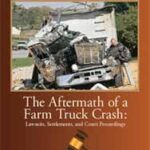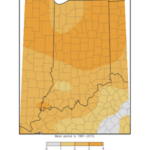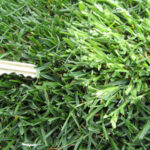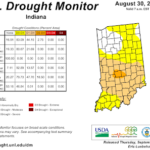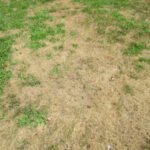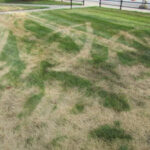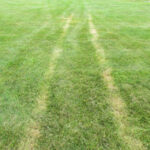Homeowner
Unwinter, Poa seedheads and Growing Degree Days, Oh MY!!!
As the “un-winter of 2011-2012” rapidly winds to a close golf course managers are already bringing their playing surfaces into peak form. For those managing putting surfaces containing annual bluegrass (Poa annua) this means addressing concerns that seedheads are affecting surface smoothness. With the lack of snow cover this past winter, the seedhead season is […]
The Aftermath of a Farm Truck Crash: Lawsuits, Settlements, and Court Proceedings (PPP-95)
Purdue Extension Publication
This publication provides insights into what to do after one of your trucks, tractors, or agricultural implements is involved in a crash or collision. This guide will describe the legal process, settlements, and court proceedings.
Get your motor running: Crabgrass control adjustment
With warm temperatures this winter many are questioning how to adjust their turf management practices in 2012. In the past 90 days, Indiana temperatures have averaged 3-4 degrees warmer than normal. The forecast also shows that we will likely continue to be warmer than normal during the next 30 days. Although I do not foresee […]
The Tractor Hitch Pin: A Critical Component in Keeping Control of Implements (PPP-94)
Purdue Extension Publication
This publication examines the factors that play critical roles in keeping implements or wagons connected to farm tractors and allow operators to maintain control of their implements and loads. Understanding how these factors work together will reduce the likelihood that a trailer could become detached during transport on busy roads or highways.
Winter Annual Weeds
Four types of broadleaf weeds exist: 1) perennial (those living more than two years), biennial (those living two years), 3) summer annuals (those germinating in the spring and dying in the fall), and 4) winter annuals (those germinating in the fall and surviving the winter and dying the following spring). Since many of these winter […]
Grass Clippings and Herbicides
I have received a few questions recently regarding the use of grass clippings on lawns treated with herbicides. Here is one of those questions: “Our Master Gardener Association will be working on a project in which they hope to use a great amount of lawn clippings to put down as compost in a large area. […]
Imprelis Update: DuPont Begins Claims Resolution Process
On September 6, DuPont began a process to fairly resolve claims for impact on trees that DuPont™ Imprelis® herbicide may have caused. Below are links to documents useful to turf professionals who applied Imprelis® last fall or this spring. More information is available at http://www.imprelis-facts.com/ and at (866) 796-4783. The deadline for submission of claims […]
Purdue Turf Scientists and Their Work Highlighted in Recent Press Releases
Scientists make turfgrass safer for animals, deadly for insects September 6, 2011 WEST LAFAYETTE, Ind. – The right combination of compounds produced by a beneficial fungus could lead to grasses that require fewer pesticides and are safer for wildlife and grazing animals, according to Purdue University scientists. Read More Purdue ‘tool box’ could be […]
Making Adjustments to Your Fertilizer Program
Although the Purdue University Turf Program publishes information about how to fertilize your turf with nitrogen (N)-based fertilizers including standard rates and timings, there are many factors that influence these rates and timings. It is important that each turf area be fertilized according to its needs. For example, some areas require more nitrogen fertilization because […]
Staying Dry
Many in central Indiana are coping again with drought a second year (See drought monitor images for Indiana (current and fall of 2010). While many pockets of Indiana have had sufficient moisture in the second half of summer (including Lafayette) others are facing dry conditions for a second year in a row. September […]
Fiberglass Tanks for Storage, Transport, and Application: Designing Your Customized Tank (PPP-93)
Purdue Extension Publication
This publication examines fiberglass storage tanks; their benefits; what to consider before buying them; and how to properly use, install, and maintain them. This publication also is a companion to Poly Tanks for Farms and Businesses (Purdue Extension publication PPP-77).
Imprelis® Update: Stop Sale, Use, or Removal Order. Q&A
The following post provides an update on Imprelis® herbicide in a Question and Answer format. Q: What action has the Office of Indiana State Chemist (OISC) recently taken concerning Imprelis®? A: The OISC issued a stop sale, use, or removal order (SSURO) on August 1, 2011 for the herbicide Imprelis®. The OISC has reason to […]
Turf: Dead or Alive?
Many areas in Indiana have received recent rains to their lawns. Some lawns have greened-up and others are still brown leaving many wondering whether their lawns are dead or alive. Below are some images that illustrate the process of determining whether or not your lawn is dead or alive. Step 1. In an area of […]
Certainty Turf Herbicide Label Changes
Monsanto recently updated the Certainty® Turf Herbicide label 2011-1 on packaged goods. These changes are effective on product packaged and shipped after May 2011. All cool season turfgrass uses for Certainty have been removed from the 2011-1 label. The product can still be used on warm-season turf. The label change also adds nursery and landscape […]
DuPont launches www.imprelis-facts.com Website
This week DuPont launched a new website designed to help answer questions from those who have used Imprelis® and are seeing injury to trees. The website, www.imprelis-facts.com, states the following: “As a precaution until we are able to more fully understand the circumstances surrounding reports of tree damage related to Imprelis®, do not apply Imprelis® […]
Water Restrictions and Managing Turf During Drought
For those in the Indianapolis area, customers of the Department of Waterworks – City of Indianapolis are “asking residential and business customers to not water lawns through Friday, July 29 in the wake of continued lack of rain, high heat, and high water consumption”. The request is voluntary – initially requested on Wednesday, July 20 […]
Imprelis UPDATE and INFORMATION
Many Indiana turf professionals who used the herbicide Imprelis® in the fall of 2010 or spring of 2011 and now are reporting off-target damage to trees and ornamentals in the landscape. Additionally, many homeowners have read an article or seen a news story about a Imprelis®. Below are links for homeowners and for turf professionals […]
The Heat is On!
Extreme heat is stressing turf areas quickly! High temperatures cause turf decline There are many causes of turf decline in the summer, but three primary physiological causes are 1) low photosynthesis rates at high temperatures, 2) lack of sufficient moisture, and 3) photorespiration. Photorespiration occurs instead of photosynthesis at temperatures above 87 °F causing cool-season […]
New Website and Blog for Purdue Turfgrass Program
Since last fall, we have been working on revising our turf website and creating a new blog that could be used to deliver our Turf Tips eNewsletter. Among our goals for the development of the website were to 1) answer the most commonly asked questions by clientele and contain commonly needed information, 2) allow easy […]
